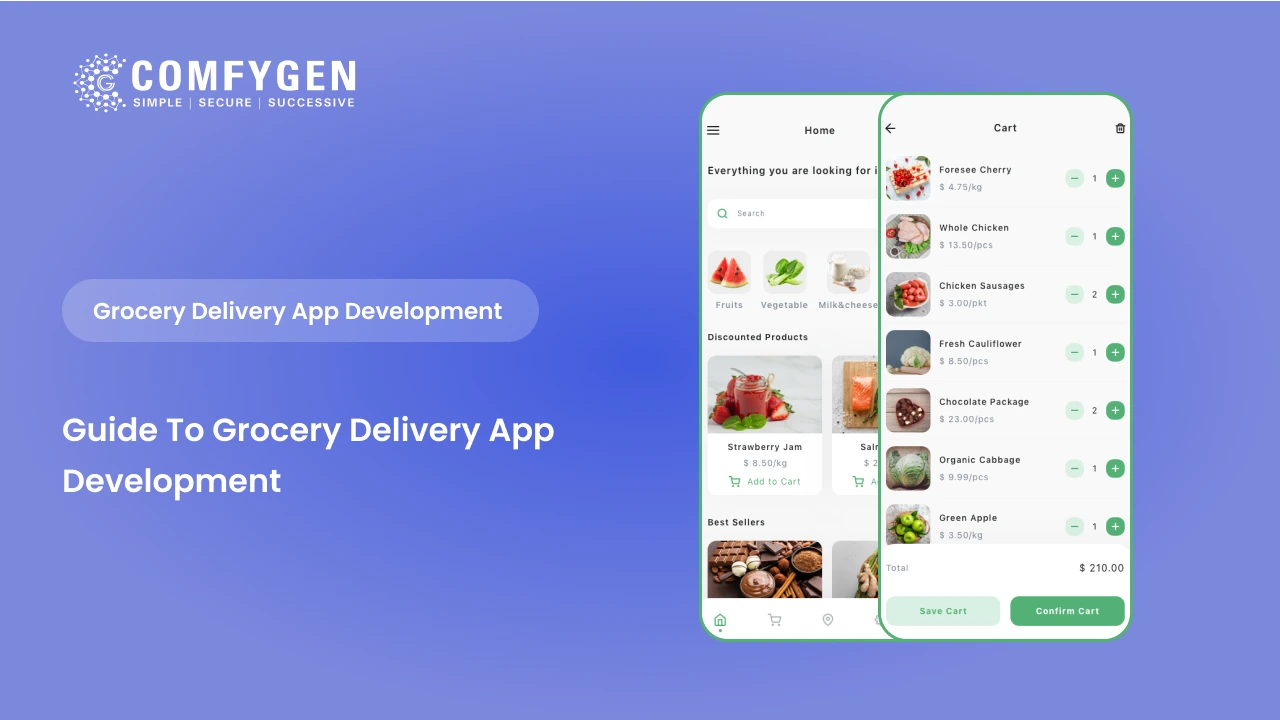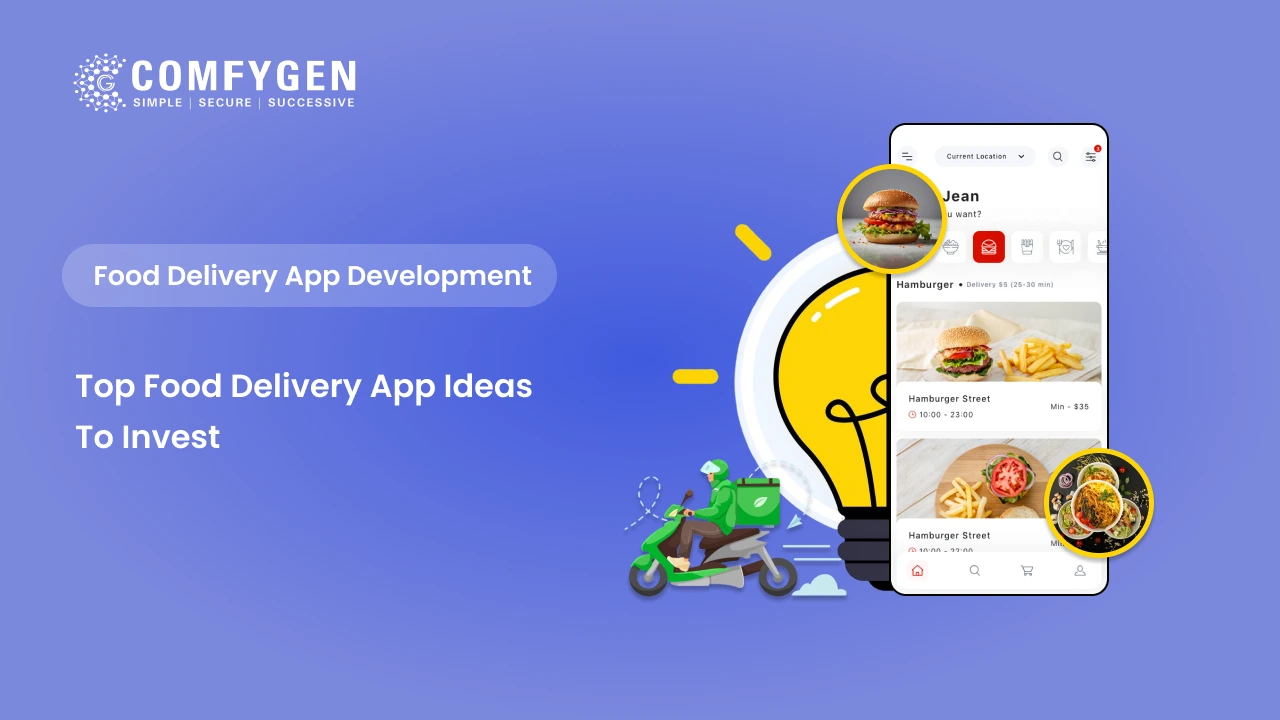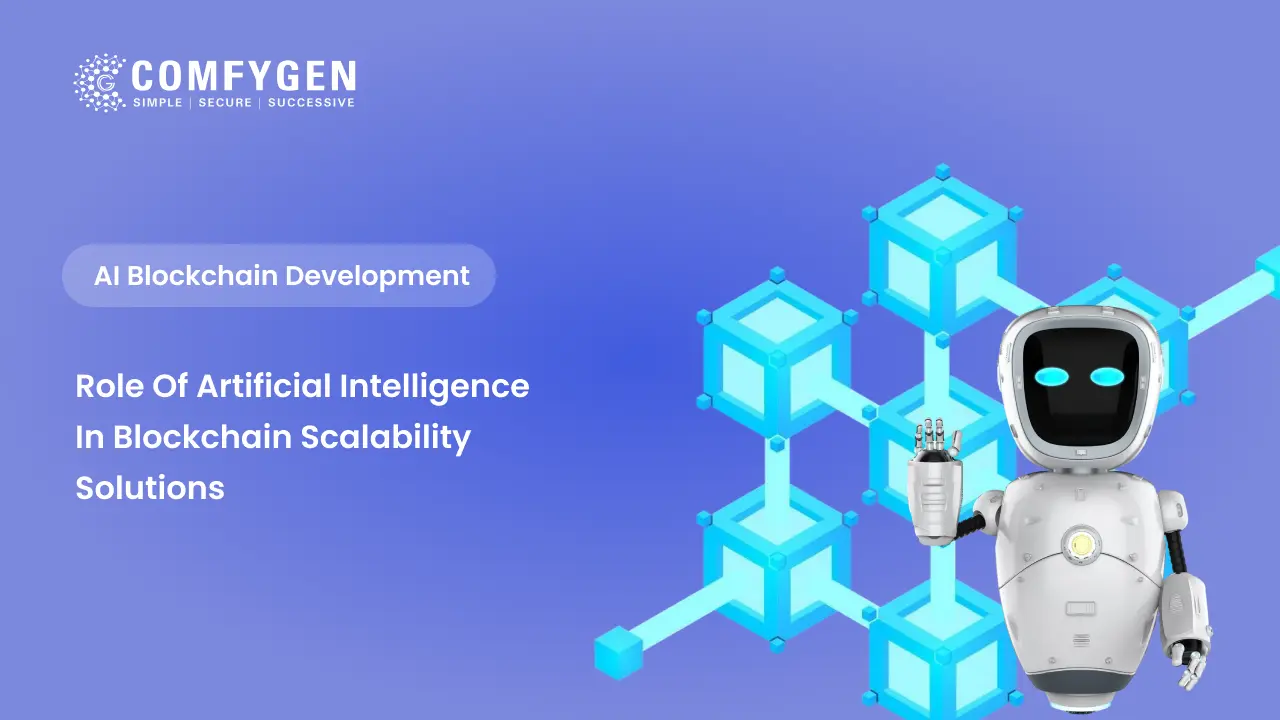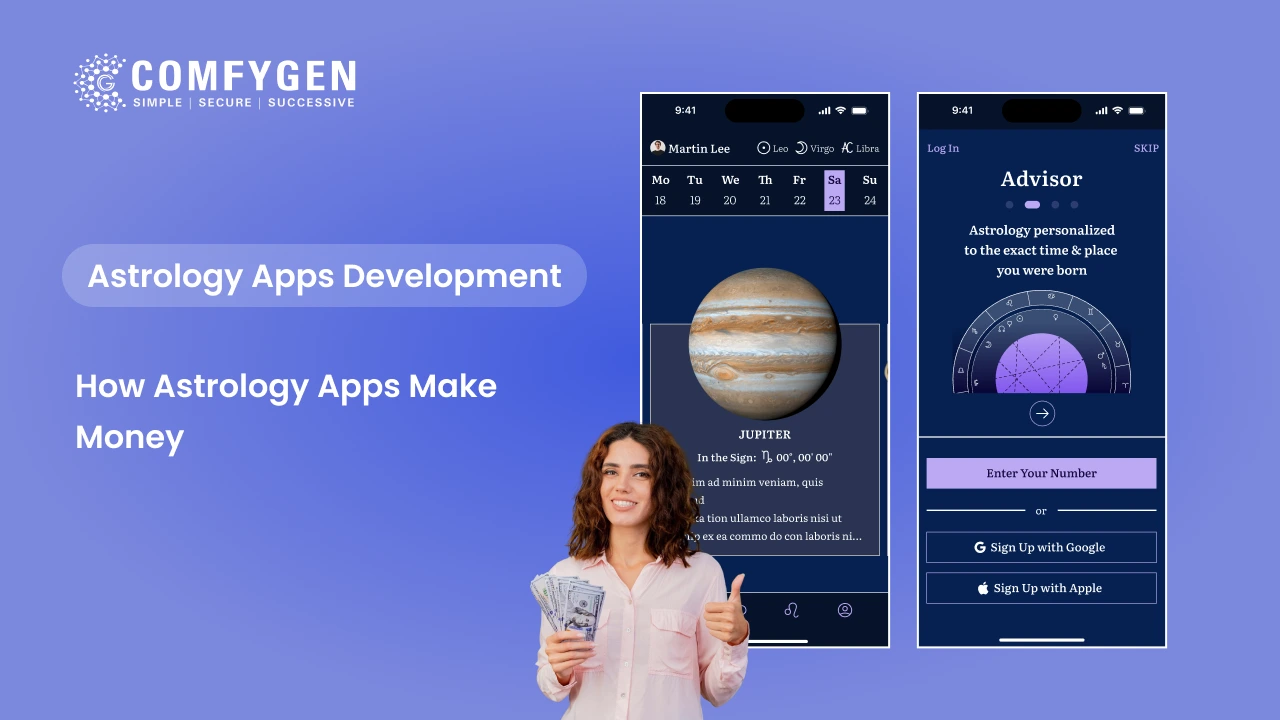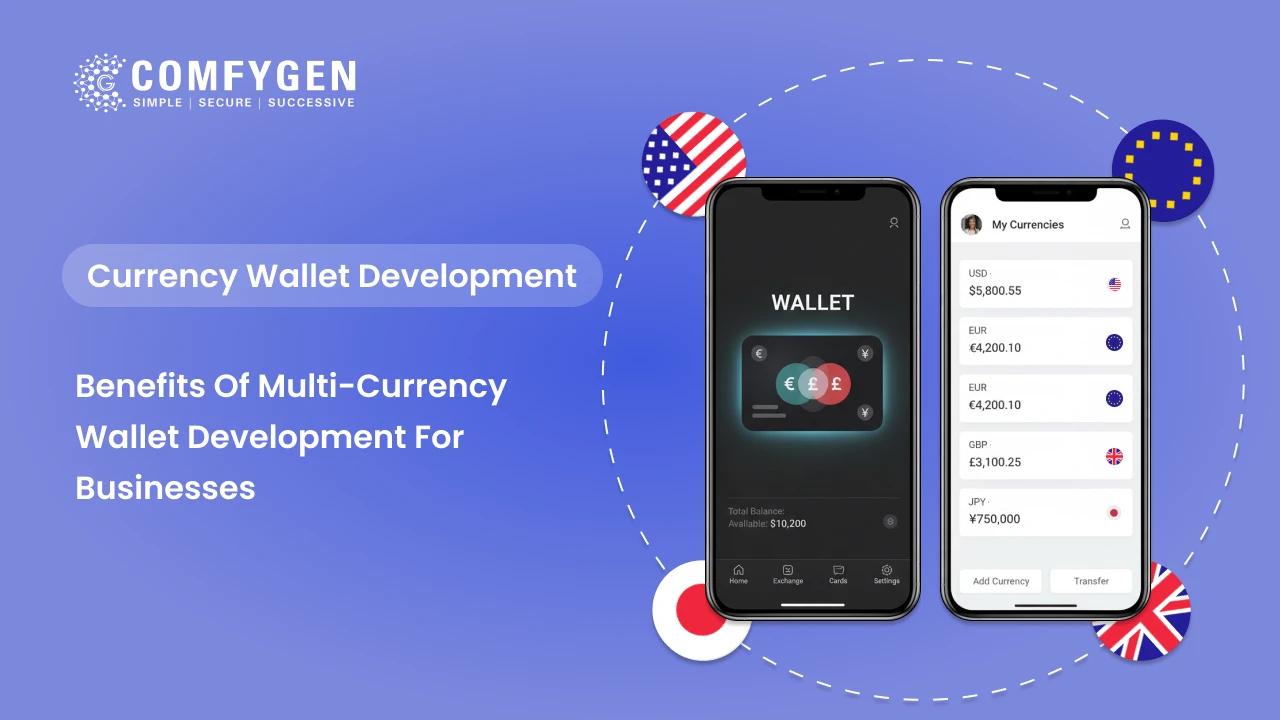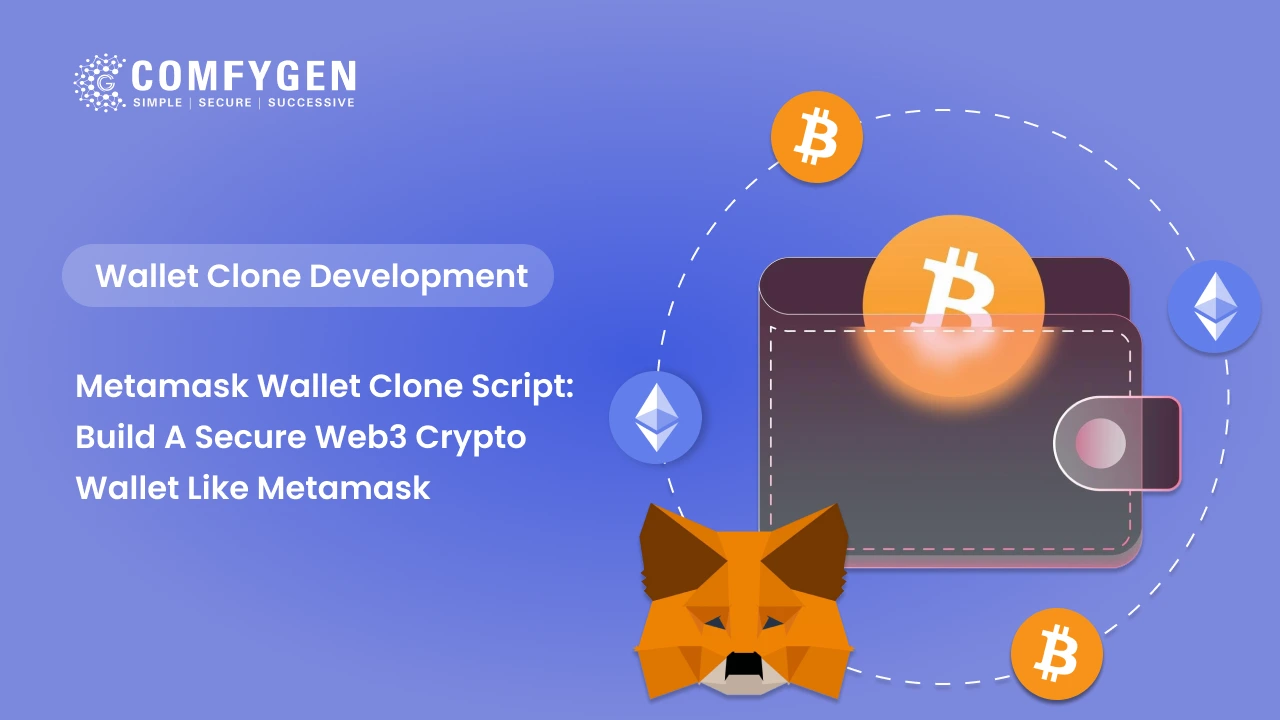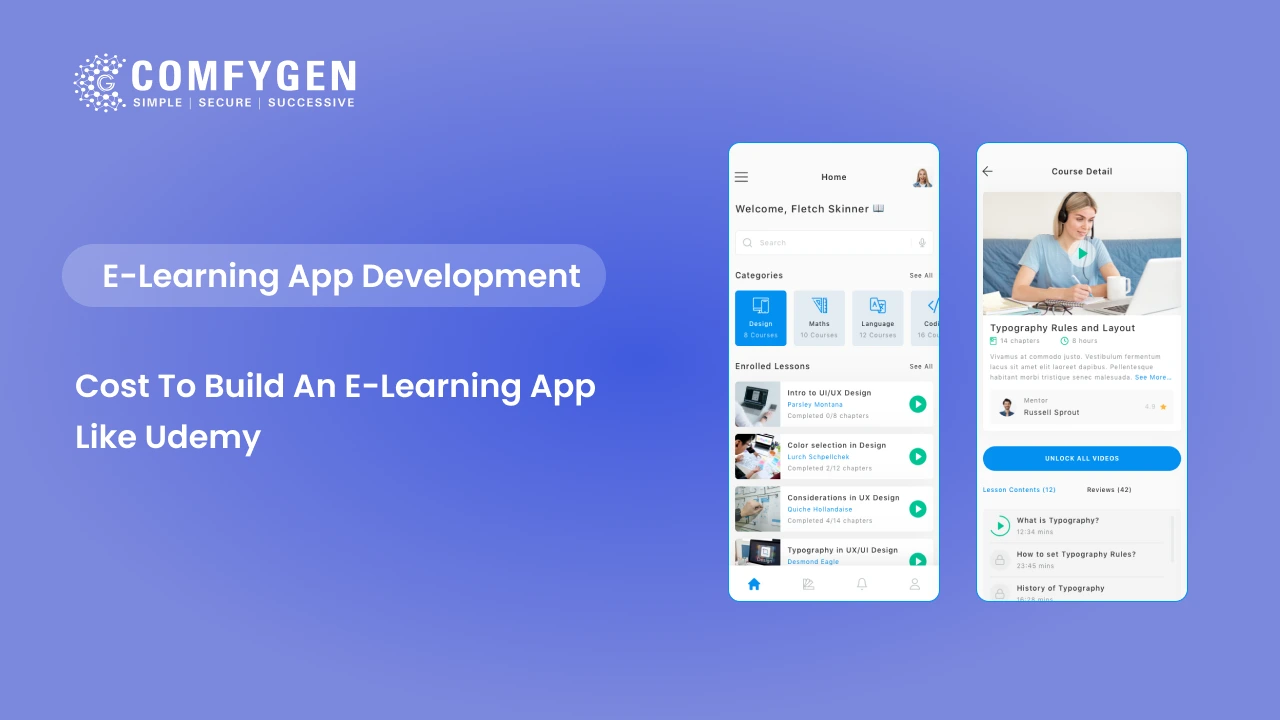Guide to Grocery Delivery App Development
Grocery delivery isn’t a new idea – it’s been around for centuries, once reserved only for the wealthy and privileged. What has changed is accessibility. With the rise of the internet, smartphones, and mobile technology, on-demand grocery delivery apps have transformed into an everyday convenience for millions.
And the numbers speak for themselves. According to Grand View Research, the global online grocery market size was valued at USD 67.64 billion in 2024 and is projected to skyrocket to USD 992.35 billion by 2033, growing at a CAGR of 36.8%. This explosive growth underscores the rapid shift in consumer habits toward digital-first grocery shopping.
In today’s fast-forward world, people juggle busy schedules, long work hours, and endless commitments, often leaving little or no time to shop for groceries in person. That’s where technology steps in, making it possible to order essentials in just a few taps.
In the following sections, we’ll walk you through everything you need to know about grocery app development – from functionality to costs, so you can build an application that truly meets modern consumer needs.
What is grocery app development?
Grocery app development is an app that helps people buy groceries online. Instead of visiting a physical supermarket, users can open the app, browse through a digital catalogue of products, add items to their cart, pay within the app, and get everything delivered to their doorstep.
It’s almost like strolling through the aisles of a supermarket – this time, you’re scanning products off virtual shelves with a swipe of your finger, without the long queues or heavy shopping bags.
Behind the scenes, grocery app development involves building features like product listings, secure payment gateways, GPS-based delivery tracking, push notifications, and even AI-driven recommendations that suggest what a customer might need next. The goal is to make grocery shopping faster, easier, and more personalised for customers and store owners.
Market trends in online grocery delivery
The online grocery sector continues to evolve rapidly, transforming the way consumers shop for essentials. As of 2025, three defining trends are shaping the industry:
Exponential Growth
According to Statista, the grocery delivery market is projected to generate USD 40.06 billion in revenue by 2025, with steady momentum expected in the years ahead. By 2030, the market is set to nearly double, reaching USD 83.68 billion, growing at a CAGR of 15.87% (2025–2030). The United States is expected to lead the way, generating a massive USD 327.72 billion in 2025 alone.
At the user level, the average revenue per user (ARPU) is estimated to be USD 206.51 in 2025, with penetration in the grocery delivery market expected to reach 13.3%, reflecting the growing depth of digital grocery shopping. This growth is not slowing down. By 2030, the market is forecasted to serve 280 million users worldwide.
Every month, millions of consumers worldwide turn to online grocery services for their convenience. The biggest reasons are simple:
- Saves time
- Avoid impulse purchases
- Easy price comparison
Intensifying competition
The grocery delivery space is becoming increasingly competitive, shaped by a handful of dominant players and a surge of new entrants.
Walmart leads the market with 31.6% of U.S. grocery e-commerce sales in 2025, followed closely by Amazon at 22.6% and Kroger at 8.6%. These companies have set high benchmarks in terms of logistics, pricing strategies, and customer experience, making it harder for newcomers to gain ground.
However, the growing demand for convenience also opens doors for innovation. Customers are no longer satisfied with basic delivery; they now expect personalised recommendations, subscription options, loyalty rewards, and ultra-fast delivery.
This is where new players can differentiate themselves by focusing on unique features, hyperlocal delivery models, or niche offerings such as organic produce, speciality goods, or sustainable packaging.
The push for instant delivery
Speed has become the new standard in online grocery. Consumers no longer settle for next-day deliveries – they expect groceries to arrive in an hour or less. Companies are heavily investing in ultra-fast logistics and subscription models to drive loyalty.
For example, programs like Walmart+ and Kroger’s Delivery Savings Pass provide unlimited free deliveries, making online shopping even more attractive.
As delivery times shrink and convenience rises, the gap between traditional shopping and online ordering continues to widen, with 67% of consumers now shopping for groceries online. It’s clear that instant delivery is not just a trend – it’s the new normal.
Key features of on-demand grocery delivery app development
A grocery delivery app works best when every role – customers, store managers, and delivery agents has the right tools. These features ensure a seamless shopping experience, expedited deliveries, and streamlined business operations.
Customer panel features
- Personalisation
The grocery delivery app must suggest products based on users’ past purchases and browsing history. This makes the shopping experience faster, more relevant, and highly tailored to individual needs.
- Push notifications
Users must receive instant updates on their order status, exclusive deals, and seasonal offers, keeping them engaged without the need to constantly open the app.
- Delivery scheduling
Customers must be able to select a delivery time that fits their routine, whether it is immediate, later in the day, or on a specific date. This flexibility ensures greater convenience and control.
- Multiple payment options
The app must support payments through cards, wallets, UPI, or cash-on-delivery. This wide range of options makes checkout seamless and secure for users.
- Search filters
The app must allow users to filter products by price, brand, or category quickly. It will enable them to find exactly what they need without having to scroll through endless items.
- Order tracking
Customers must be able to track their groceries in real time using GPS-enabled updates. This feature enhances trust by displaying the exact time of delivery arrival.
- Repeat order
The app must allow users to reorder frequently purchased products with just one tap. This feature saves time and simplifies the process for recurring essentials.
- Gamification
The grocery delivery app must include loyalty points, rewards, or cashback programs to make shopping more engaging. This encourages users to shop regularly and builds brand loyalty.
- Feedback and ratings
The app must allow customers to share their experiences through reviews and ratings. This provides valuable insights for businesses, helping to improve overall service quality.
Delivery agent panel features
- Push notifications
Delivery agents must receive instant alerts about new orders, status changes, or updates. This ensures they never miss important tasks while on duty.
- Delivery instructions
Agents must get clear instructions for each order. This minimises errors and helps ensure smooth, accurate deliveries.
- In-app chat
The app must allow agents to communicate directly with customers through the app. This feature improves coordination and reduces delivery delays.
- Delivery tracking
The app must enable agents to update their delivery progress in real-time. This provides transparency for both the admin and the customer.
- Earnings overview
Agents must be able to view their daily, weekly, or monthly earnings in one place. This adds clarity and helps maintain motivation.
- Customer contact
Agents must have access to customer details for quick communication. It makes resolving address issues or clarifications much easier.
- Order details
Each order must come with complete product and delivery information. This ensures agents know precisely what needs to be delivered and where.
- GPS navigation
The app must have built-in GPS to help agents follow the best routes to customer locations. This reduces delays and makes deliveries more efficient.
Store manager panel features
- Customer support
Store managers must be able to promptly address queries and resolve complaints. This ensures better service quality and customer satisfaction.
- Logistics integration
The panel must connect seamlessly with delivery agents and logistics partners. This helps in faster dispatch and smoother coordination.
- Secure payment options
Store managers must be able to manage and monitor secure payment methods. This ensures transactions are safe and error-free.
- Inventory management
Managers must be able to update product availability, stock levels, and pricing in real time. This prevents order cancellations due to out-of-stock items.
Understanding grocery delivery business models
| Business model | How it works | Advantages | Challenges | Example |
| Inventory-based | Platform buys and stores products in its own warehouse and manages the entire supply chain. | Fast delivery, fresh products, full control over quality. | High investment in warehousing, logistics, and operations. | FreshDirect |
| Multi-vendor marketplace | Connects multiple sellers with customers; the platform earns commission without holding inventory. | Wide product variety, lower operational costs. | Quality control, price competition, and complex seller management. | Peapod |
| Hyperlocal | Partners with local stores to deliver groceries quickly within a defined area. | Ultra-fast delivery, supports local businesses, and reduces carbon footprint. | Requires a strong delivery network, timely coordination with multiple vendors. | Instacart |
| Click & collect / BOPIS | Customers order online and pick up groceries in-store. | Saves delivery costs, is convenient, and can drive additional in-store purchases. | Relies on in-store staff and organisation for order readiness. | Walmart |
Popular grocery delivery apps
Instacart
Instacart leads the on-demand grocery delivery space by connecting customers with local stores without owning inventory. Its revenue comes from delivery and service fees, the Instacart+ subscription, retailer commissions, and in-app advertising. This enables Instacart to scale efficiently while providing users with convenience and choice.
Instacart collaborates with over 1,800 retail banners, giving users access to more than 100,000 store locations. In 2024, the company reported approximately $3.38 billion in annual revenue, representing an 11% year-over-year increase.
Walmart
Walmart, the world’s largest retailer, reported total annual revenue of approximately $681 billion for fiscal year 2025, with a diverse range of revenue sources and an omnichannel approach that continues to evolve rapidly.
Its business model centers on owning a significant portion of the inventory and infrastructure powering physical and digital retail, as well as leveraging newer streams such as memberships and advertising.
Amazon Fresh
Amazon Fresh is Amazon’s grocery delivery and physical retail service, offering a wide selection of fresh produce, dairy, meats, pantry staples, and household essentials. The Amazon Fresh connects customers with groceries from local suppliers and Amazon’s fulfilment centres without owning all inventory directly.
Products are sourced from both Amazon’s distribution network and regional partners, enabling fast delivery of fresh produce, dairy, meats, and pantry staples. Delivery is fulfilled either through Amazon’s own logistics or third-party delivery services.
As of August 2025, Amazon Fresh offers same-day delivery of perishable groceries in over 1,000 U.S. cities and towns. The company plans to expand this service to over 2,300 locations by the end of 2025.
Want to Develop the Best Grocery Delivery
App Like Walmart?
Let’s Connect
The guide to developing an on-demand grocery delivery app
Building a grocery delivery app from scratch is like constructing a house: first, you lay the blueprint (business planning), then design the structure (UI/UX), and finally bring it to life with technology (development). Below is a detailed roadmap to guide you through the process.
Phase 1: Business development (The foundation)
This is where ideas turn into a solid strategy.
| Step | What to do | Why it matters | Example |
| Market analysis | Study trends, customer demand, and forecast where the market is headed. | Ensure your business models are aligned with what customer wants | Quick commerce (10-minute delivery) is rising in cities. |
| Competitor research | Deep dive into apps like Instacart, Walmart, and Amazon Fresh. | Learn from their strengths, and spot gaps. | Instacart wins on variety. |
| Customer insights | Define target users: age, lifestyle, shopping habits. | Helps design the app’s features that users actually need. | Families want bulk discounts; professionals want speedy delivery. |
| Feature mapping | List the must-have features for users, delivery agents, and shop owners. | Prevents feature overload or gaps. | Customer: live tracking; Courier: route optimisation. |
| Concept formulation | Finalise your unique value proposition (UVP), killer feature, and target market. | Shapes how your app stands out. | 15-minute delivery for urban millennials. |
Phase 2: Design delivery (The blueprint)
This is where strategy becomes visible. You’ll shape how the app looks and feels for users.
| Design step | Purpose | Example |
| References | Collect UI ideas you like (and dislike). | DoorDash’s simple checkout flow. |
| Moodboard | Define look and feel with colours, fonts, and imagery. | Amazon Fresh: clean and premium. |
| User journey mapping | Map every step: from app launch to checkout. | Customer opens app → searches milk → adds to cart → makes payment → tracks delivery. |
| Wireframes | Simple sketches of screens to finalise structure. | Black and white layouts of product listings and checkout. |
| Design concept | Build 2–3 polished screens to lock visual style. | Home screen, cart and payment flow. |
| Prototypes | Clickable demo of app flow. | Before launching, the team tests a clickable prototype with users to see if the “subscribe for milk” feature is intuitive. |
| Design system / UI kit | Set of reusable elements (buttons, icons, colours). | A delivery app could use one consistent “Add to cart” button style across all screens so users instantly recognise it. |
Phase 3: Technical development (The build)
Now comes the execution stage: coding the app, testing it, and launching it to real users.
| Steps | What to do | Why it matters | Example/tools |
| 1. Build an MVP (Minimum Viable Product) | Develop only core features: product search, cart, checkout, order tracking. | Test idea quickly, reduce risk, and save costs. | MVP app with 5-minute delivery promise. |
| 2. Choose the tech stack | Select scalable and widely supported technologies for mobile, web, and desktop. | Ensures smooth performance, faster development, and future scalability. | Mobile: React Native Web: React.js, Node.js
Desktop: Electron.js |
| 3. Code and launch the first version | Write clean, bug-free code and launch the MVP. | Early launch builds trust and gets real users faster. | Cross-platform app available on iOS and Android. |
| 4. Gather feedback | Use surveys, analytics, and customer support to learn user needs. | Helps prioritise features that users actually want. | 60% of users request scheduled delivery, so add it in the next update. |
| 5. Scale and update | Gradually add advanced features and improve performance. | Keeps the app competitive and increases customer loyalty. | Smart shopping lists, loyalty programs, and eco-friendly delivery options. |
Factors influencing the cost of grocery delivery app development
Building a grocery delivery app isn’t just about coding – it’s about making smart decisions that directly impact the grocery app development cost. Here are the most significant factors you should keep in mind:
App complexity and features
The cost largely depends on whether you’re building a simple MVP with basic features (like user registration, product catalogue, and checkout) or a fully loaded app with advanced features such as AI-driven recommendations, multi-store support, and real-time tracking.
| App type | Key features | Cost range |
| Basic MVP | Login, catalogue, cart, checkout | $40,000 – $100,000 |
| Intermediate | Live tracking, offers, push notifications | $100,000 –$200,000 |
| Advanced | AI recommendations, voice search, multi-store support | $200,000 –$400,000 |
| Enterprise-grade | AI, AR, IoT, multi-region support | $400,000 – $600,000+ |
Technology stack and infrastructure
Choosing the right tech stack also influences cost. A simple stack for mobile and web will cost less, while advanced integrations like AI, ML, and cloud scalability increase expenses.
| Tech setup type | Estimated cost range |
| Simple setup (standard APIs, basic database) | $5,000 – $15,000 |
| Intermediate (real-time inventory, cloud hosting, multiple APIs) | $20,000 – $35,000 |
| Advanced (microservices, AI/ML, analytics) | $40,000 – $70,000 |
| Enterprise-grade (multi-cloud, IoT integration) | $100,000+ |
Design and user experience
A clean, intuitive design helps retain users, but custom UI/UX with animations, AR try-ons, and tailored themes increases the budget.
| Feature level | Example features | Cost range |
| Core essentials | Catalogue, cart, payments | $5,000 – $12,000 |
| Intermediate | Filters, reviews, push notifications | $10,000 – $20,000 |
| Advanced | AI suggestions, loyalty programs, and AR views | $20,000 – $50,000 |
| Enterprise features | Multi-region, subscriptions, analytics | $50,000 – $100,000+ |
Choosing the right platform: native vs. cross-platform
Deciding on the right platform for your app significantly affects both development costs and long-term maintenance. If your app targets only one platform, development may be more straightforward and cost-effective. However, if you aim to reach users across multiple platforms, you’ll need to account for higher development effort and investment.
While Android has a larger global user base, iOS users often engage more deeply with apps. For reaching both audiences, cross-platform frameworks like Flutter or React Native are a smart choice, cutting grocery delivery app development costs by around 30–40% without compromising performance – ideal for grocery delivery or other service-based apps.
| Platform approach | Key benefits | Investment range |
| iOS | High performance, immediate access to new features | $5,000 – $150,000 |
| Android | Larger market reach, supports diverse devices | $25,000 – $150,000 |
| Cross-platform framework | Single codebase, faster development, cost-effective | $30,000 – $200,000 |
Maintenance and updates
Post-launch, regular updates, bug fixes, and server management are essential to keep the app running smoothly.
| Cost category | Details | Cost range |
| Maintenance | 15–25% of initial development annually | Varies |
| Hosting | From small apps to enterprise platforms | $500 – $10,000+ per month |
| Marketing and acquisition | Initial campaigns, $15–$25 per user | $50,000 – $200,000 |
| Legal & compliance | Licenses, data privacy, and food delivery permits | $5,000 – $25,000 annually |
Security requirements
When you’re building a grocery delivery app, security isn’t optional – it’s the backbone of user trust. Your platform will handle payment data, personal information, and shopping behaviour insights. A single breach can undo years of brand building.
That’s why partnering with a custom grocery delivery app development agency and meeting standards like GDPR, PCI DSS, and region-specific data protection laws is a must.
Depending on the level of protection you choose, your investment will vary:
| Security level | What it covers | Cost estimate |
| Basic protection | SSL certificates and simple encryption to safeguard transactions | $10,000 – $50,000 |
| Standard security | OAuth authentication, stronger encryption methods, secure APIs for safer data flow | $50,000 – $100,000 |
| Advanced protection | Multi-factor authentication, threat monitoring systems, and compliance frameworks for enterprise-grade safety | $100,000 – $150,000 |
Launch Your Own Grocery Delivery App
for your Business?
Let’s Connect
Partner with Comfygen for on-demand grocery mobile app development
Building a successful grocery delivery app requires more than just coding; it demands a deep understanding of user behaviour, supply chain dynamics, and seamless digital experiences. Comfygen Technologies is top rated delivery app development company specialises in on-demand grocery delivery app development, creating intuitive, scalable, and feature-rich mobile solutions tailored to your business needs.
By partnering with Comfygen, you gain access to:
- Custom app design: Engaging and easy-to-navigate interfaces designed to boost user retention.
- Advanced features: Smart search, AI-driven recommendations, real-time inventory tracking, and secure payment integration.
- Scalable solutions: Apps built to handle growing orders and expanding product catalogues without performance issues.
- End-to-end support: From initial concept to launch and ongoing updates, ensuring your app stays competitive.
Looking to create an on-demand grocery delivery app similar to Instacart? Comfygen specialises in grocery mobile app development, providing end-to-end solutions for businesses aiming to tap into the booming online grocery market.
Partner with Comfygen for on-demand grocery app development and turn your vision into a seamless, profitable digital solution.
Final Thoughts
The grocery delivery industry isn’t just growing—it’s transforming how consumers purchase daily essentials. Whether you’re a traditional retailer looking to go digital or a startup launching the next big grocery platform, now is the time to invest in a feature-rich, scalable, and user-first app.

Mr. Saddam Husen, (CTO)
Mr. Saddam Husen, CTO at Comfygen, is a renowned Blockchain expert and IT consultant with extensive experience in blockchain development, crypto wallets, DeFi, ICOs, and smart contracts. Passionate about digital transformation, he helps businesses harness blockchain technology’s potential, driving innovation and enhancing IT infrastructure for global success.
Based on Interest
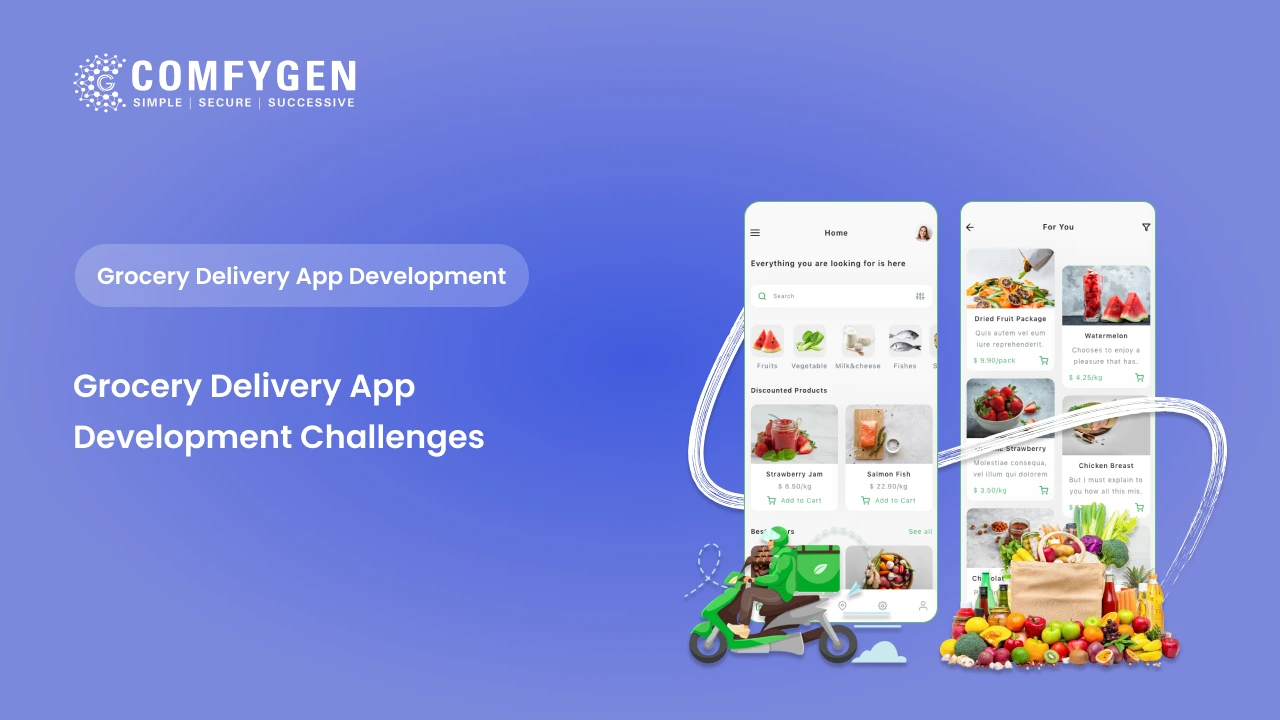
Grocery Delivery App Development Challenges: Common Problems and How to Overcome Them
In today's fast-paced digital age, the online grocery delivery industry is experiencing significant growth. With consumers preferring doorstep facilities over traditional shopping,…

